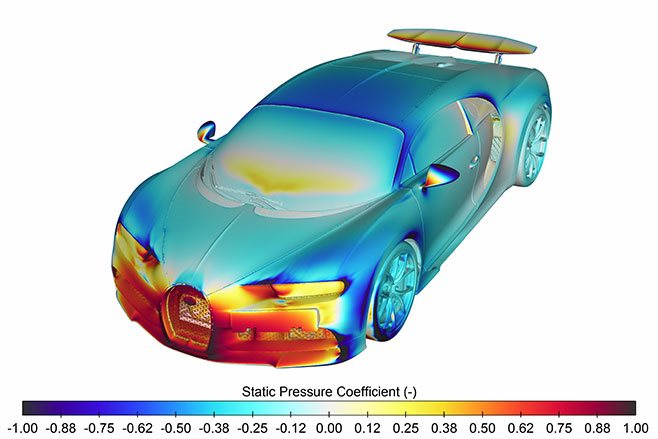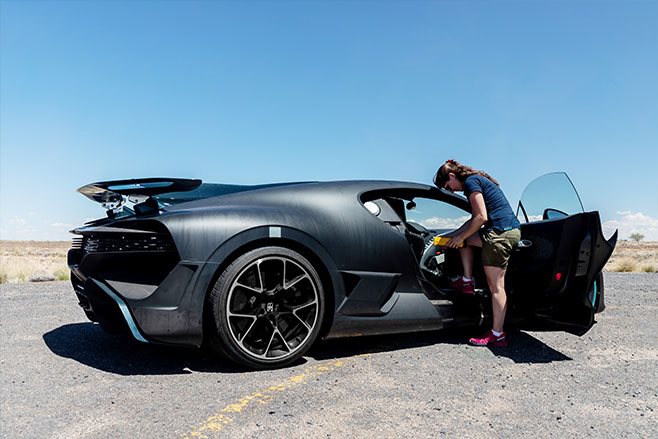
Two test vehicles were made available for climate trials during the development of the Chiron. While 3D simulation was used to assess the airflow, Lemke also resorts to a decidedly low-tech method of measuring the aerodynamics on this high-tech hypercar. Wool threads are attached to clearly indicate airflow, their super light weight particularly helpful in identifying draughts. ‘There mustn’t be any draughts,’ says Lemke, ‘The air conditioning system is working best when occupants don’t notice it. We have to make sure there are no draughts or noise – only then does it make you feel comfortable.’
Further complicating matters is the fact that different nationalities have distinct preferences for their ideal temperature. According to Bugatti, Europeans feel comfortable at 21-22 degrees, whereas most Americans prefer it a few degrees colder. ‘For us, it’s important to ensure that the selected temperature is quickly established,’ says Lemke.
Lemke’s work is a reminder of the incredible level of detail required to produce any car, let alone one capable of such extreme performance. After all, the owner of a Bugatti Chiron might travel 250mph once or twice in the car’s life, whereas they will use the air conditioning every time they drive.

Four fast and cool facts
1. Constant R&D
Dr Lemke conducts continuous research and development into not only increasing the outright performance of the air conditioning system but also its efficiency in order to minimise the use of refrigerants and energy.
2. Complex Demands
One of the greatest challenges with the Chiron’s air-conditioning is not just making sure it works perfectly, but that it works perfectly at all speeds and under any engine load, for those parameters are much wider than in most conventional production cars.
3. Heat Exchangers Aplenty
The Chiron’s cooling system is enormously complex, consisting of 10 radiators with three for the engine water, one for the charge air, two for the intercoolers and individual coolers for the engine, transmission, differential and hydraulic oil.
4. Tight Fit
Possibly the Chiron’s most amazing feature is its packaging, with a monster 8.0-litre, quad-turbo W16 engine, all-wheel drive, 10 radiators, passengers and luggage space squeezed into a car that is only a couple of centimetres longer than a Porsche 911.